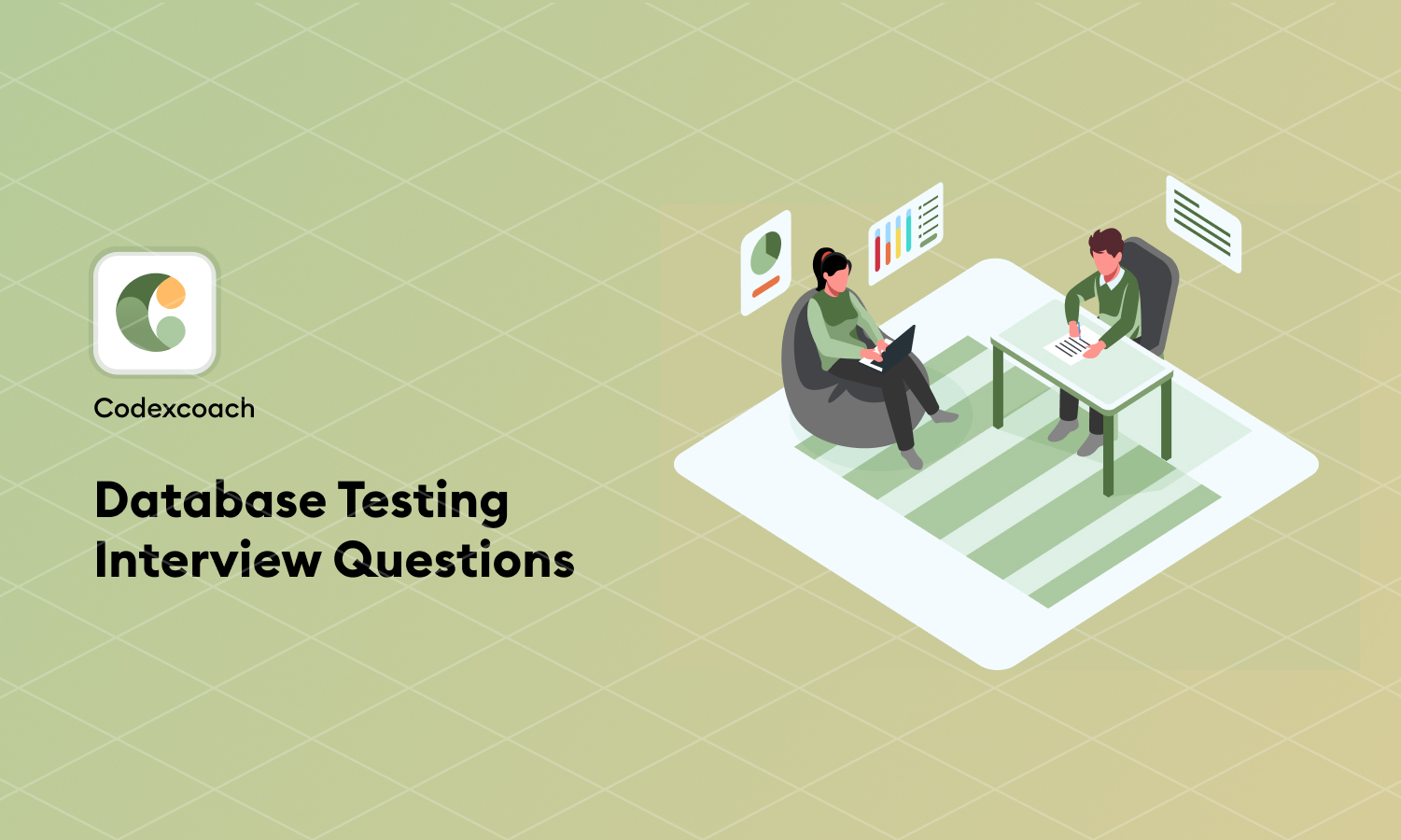1. What is Database Testing?
Answer: Database testing involves verifying the integrity and correctness of databases, including data validation, data integrity testing, performance-related to database, and testing of procedures, triggers, and functions in the database. This ensures that the database systems perform as expected and the data stored is accurate and consistent.
2. What are the types of Database Testing?
Answer: The main types are:
- Structural Testing: Focuses on testing the elements within the data repository, like tables, columns, and indexes.
- Functional Testing: Verifies that all database functions, procedures, and triggers work as intended.
- Non-functional Testing: Includes testing for performance, load, stress, scalability, and security of the database.
Also Read: Top Software Development Frameworks For 2024
3. How do you perform Data Integrity Testing?
Answer: Data integrity testing ensures that the data is accurate, consistent, and reliable. This involves checking constraints, indexes, triggers, and database server validation rules to ensure data integrity is maintained through updates, deletes, and inserts.
4. Can you explain ACID properties in databases?
Answer: ACID stands for Atomicity, Consistency, Isolation, and Durability. These are key properties that ensure reliable processing of database transactions. Atomicity ensures complete success or failure of a transaction; Consistency ensures that data must meet all validation rules; Isolation ensures that concurrent transactions don’t affect each other; and Durability ensures that once a transaction is committed, it remains so, even in the event of system failures.
5. What is a Join and explain its types?
Answer: A join is a SQL operation used to combine rows from two or more tables based on a related column. The main types of joins are Inner Join, Left Join, Right Join, Full Join, and Cross Join.
6. Describe the difference between a primary key and a unique key.
Answer: A primary key uniquely identifies each record in the table and cannot be NULL, whereas a unique key also ensures uniqueness but can have one NULL value.
7. What is SQL Injection and how can it be prevented?
Answer: SQL Injection is a security vulnerability that allows an attacker to interfere with the queries an application makes to its database. It can be prevented by using parameterized queries, stored procedures, and by validating user inputs.
8. How do you test a stored procedure?
Answer: Testing a stored procedure involves checking its logic, verifying it with various input parameters to ensure it returns the expected results, and ensuring it handles errors gracefully.
9. Explain what is meant by database normalization.
Answer: Database normalization is the process of organizing data in a database to reduce redundancy and improve data integrity. It involves dividing a database into two or more tables and defining relationships between the tables.
10. What are some common performance issues in databases? How would you address them?
Answer: Common issues include slow query responses, deadlocks, and resource contention. To address these, you can optimize queries, index the necessary columns, monitor and analyze the database performance, and ensure proper capacity planning and scaling.
11. What is a deadlock in a database? How can it be prevented?
Answer: A deadlock occurs when two or more transactions are waiting for each other to release locks on resources. To prevent deadlocks, applications can be designed to request database locks in the same order, use lock timeouts, or reduce transaction scopes to minimize locking.
12. How do you test a database backup and recovery plan?
Answer: Testing a backup and recovery plan involves verifying that the backup process captures all necessary data correctly, and ensuring that the data can be restored from the backup. This includes testing for data integrity post-restoration and ensuring the recovery meets the required time objectives.
13. Explain the concept of sharding in databases.
Answer: Sharding is a method of distributing data across multiple machines to improve database performance and scalability. It involves dividing a large database into smaller, more manageable pieces, with each shard running on a separate server instance.
14. What is database replication? What are its types?
Answer: Database replication involves copying and maintaining database objects in multiple databases that make up a distributed database system. Types include snapshot replication, transactional replication, and merge replication.
15. How would you test database migration?
Answer: Testing database migration involves verifying that data is accurately and completely transferred from one database to another. This includes validating data schemas, checking data integrity, ensuring no data is lost or corrupted, and verifying that all applications work correctly with the new database.
16. Can you explain what a database transaction is and its properties?
Answer: A database transaction is a unit of work that is either completed in its entirety or not done at all. Its properties, often referred to as ACID properties, include Atomicity, Consistency, Isolation, and Durability.
17. What is the difference between DELETE and TRUNCATE commands in SQL?
Answer: DELETE is a DML command used to remove rows from a table and can be rolled back. TRUNCATE is a DDL command that removes all rows from a table, freeing the space for other objects, and cannot be rolled back.
18. How do you ensure the security of a database?
Answer: Database security can be ensured by implementing strong user authentication, using role-based access control, encrypting sensitive data, regularly updating the database system, and conducting regular security audits.
19. What is a Database Index? How does it improve performance?
Answer: A database index is a data structure that improves the speed of data retrieval operations. It works by efficiently locating and accessing the data without having to search every row in a database table.
20. How would you test the scalability of a database?
Answer: Testing database scalability involves evaluating how well the database can handle increasing amounts of data and concurrent users. This includes load testing, stress testing, and performance testing under varying load conditions.
21. What are data-driven tests in database testing?
Answer: Data-driven testing is a framework where test input and output values are read from data files (like Excel, CSV, XML) instead of being hardcoded. This approach allows testers to easily modify and extend their test cases by changing the test data, without altering the actual test scripts.
22. What is a cursor and how is it used in a database?
Answer: A cursor is a database object used to retrieve data from a result set one row at a time. It’s particularly useful in situations where the result set contains multiple rows, and you need to process each row individually.
23. How do you conduct performance tuning in a database?
Answer: Performance tuning in a database involves optimizing SQL queries, creating efficient indexes, optimizing database structure, and configuring database server settings. Regular monitoring and analysis of database performance metrics are also crucial for identifying and resolving performance bottlenecks.
24. What is a schema in a database and why is it important?
Answer: A schema in a database is the structure that represents how the database is constructed. It includes the tables, views, relationships, and other elements. Schemas are important because they allow a database to have its structure and constraints, ensuring data consistency and organization.
25. Describe the difference between clustered and non-clustered indexes.
Answer: Clustered indexes sort and store the data rows in the table based on the index key. There can only be one clustered index per table. Non-clustered indexes, on the other hand, maintain a separate structure from the data rows, with the index structure containing pointers to the actual data. A table can have multiple non-clustered indexes.
26. How do you validate a data load in ETL testing?
Answer: Validating a data load in ETL (Extract, Transform, Load) testing involves ensuring that the data is accurately extracted from the source, transformed correctly, and loaded into the target system. This includes checking for data completeness, data transformation accuracy, and data quality.
27. What is a database testing view? What are its advantages?
Answer: A database testing view is a virtual table that is based on a SQL query. It can encapsulate complex queries and present a simpler interface to the user. Advantages include improved security (as it can limit user access to specific rows or columns), simplified query syntax, and the ability to represent computed columns.
28. Explain what a transaction log is in a database.
Answer: A transaction log is a critical part of the database testing that records all transactions and the database modifications made by each transaction. It is essential for maintaining the integrity of the database, allowing for recovery of the database testing to a consistent state in case of a system failure.
29. How do you handle database versioning?
Answer: Database versioning involves managing changes to the database schema and objects over time. This can be handled through version control tools that track changes and allow for rollback, as well as careful documentation and testing of changes.
30. What are the differences between SQL and NoSQL databases?
Answer: SQL databases are relational, table-based database testing, use structured query language for defining and manipulating data, and are typically more suited for complex queries. NoSQL database testing are non-relational, can store data in various formats (document, key-value, graph, or wide-column), and are designed for high scalability and flexibility.
31. What is a composite key in a database?
Answer: A composite key is a primary key composed of two or more columns used together to uniquely identify a record in a table. It is used when no single column can uniquely identify the record.
32. Explain the difference between SQL and PL/SQL.
Answer: SQL is a standard language for accessing and manipulating database testing, primarily used for querying and managing data. PL/SQL, on the other hand, is a procedural language extension to SQL, used in Oracle. It allows the writing of complete programs that include SQL statements, control structures, and more.
33. What is database denormalization and when would you use it?
Answer: Denormalization is the process of adding redundant data to a normalized database testing to improve read performance. It is used in situations where read performance is critical and outweighs the disadvantages, like increased storage and complexity in data updates.
34. How do you test an SQL query?
Answer: Testing an SQL query involves ensuring it returns the correct data set, performs efficiently, handles edge cases, and is secure against injection attacks. This may include testing with different input values, examining execution plans for performance, and checking for adherence to security practices.
35. What are triggers in a database?
Answer: Triggers are procedures in a database testing that automatically execute in response to certain events on a particular table or view. They are used for maintaining the integrity of the data, enforcing business rules, and auditing changes to data.
36. Can you explain what a NoSQL injection is?
Answer: NoSQL injection is a security vulnerability that allows an attacker to inject malicious code into a query in a NoSQL database testing, potentially leading to unauthorized data access or manipulation. It’s similar to SQL injection but tailored to the syntax and capabilities of NoSQL database testing.
37. Describe the process of data warehousing.
Answer: Data warehousing is the process of collecting and managing data from various sources to provide meaningful business insights. It involves data extraction, transformation, and loading (ETL), storing data in a structured format, and providing tools for querying and analyzing the data.
38. How do you manage database testing changes in a team environment?
Answer: Managing database testing changes in a team environment requires a version control system for database testing scripts, clear communication and documentation of changes, adherence to agreed-upon standards and procedures, and possibly using database testing change management tools to streamline the process.
39. What is an ORM and how does it work?
Answer: ORM (Object-Relational Mapping) is a programming technique used to convert data between incompatible type systems in object-oriented programming languages and database testing. It allows developers to work with data as objects, simplifying data manipulation and reducing the need for SQL code.
40. What strategies would you use for optimizing large Database Testing?
Answer: Optimizing large databases involves indexing strategically, partitioning tables, optimizing queries, using appropriate database normalization, monitoring and tuning the performance, and considering hardware improvements like increased memory or faster disks.





